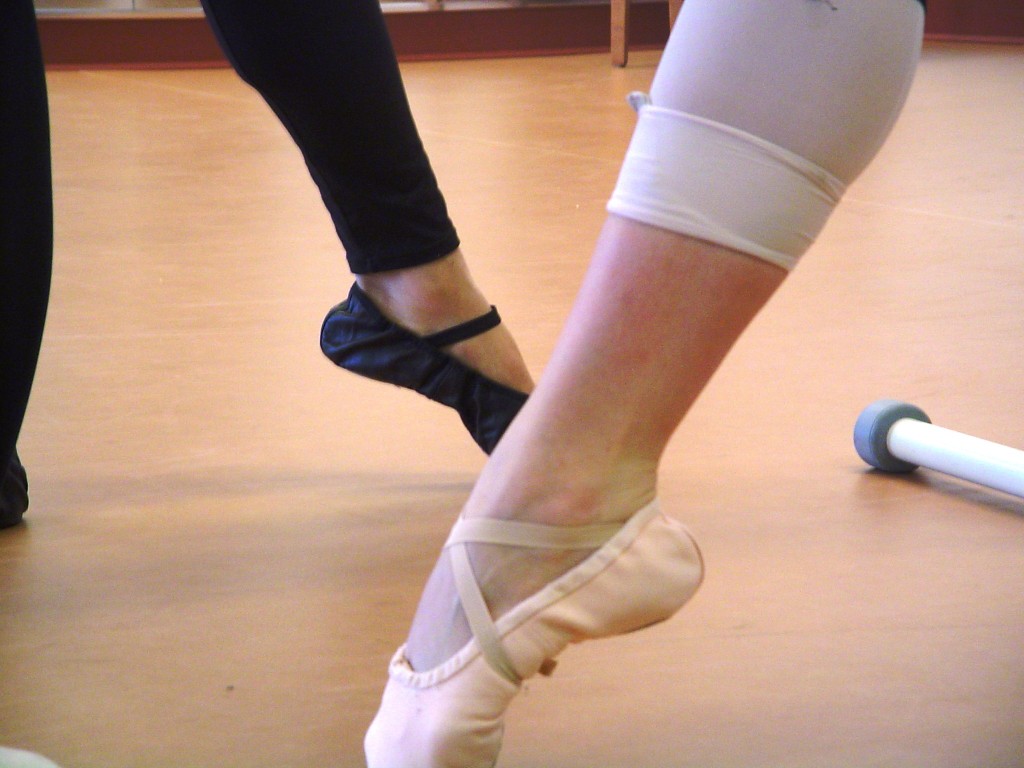Screening in a Dance Wellness Program

Introduction
Dance as an art form is an activity with high physical and mental demands. To monitor the impact of these demands Dance Wellness Programs are often established dance schools, university dance departments, and professional dance companies. The goal is to promote dancer health. A Dance Wellness Program may include a range of activities and approaches to dancer health, including screenings. Screenings are groups of tests or assessments designed to collect information regarding a dancer’s unique condition. Screenings may include both physical assessments and surveys that collect information about a dancer’s nutritional and psychological well-being. The purpose of this resource paper is to inform the dance community of the various purposes and types of screenings, including pre-participation physical screening and injury assessment.
Purpose of Screening
The purpose of screening is to gain important information about a dancer that may aid the dancer, teacher, company physical therapist or other healthcare professionals who work with the dancer. The information can be used to promote on-going health and well-being. Screening may be most effective in promoting dance wellness when coupled with ongoing education programs. Information gained from a screening can be used to design training programs outside of class to achieve greater fitness by enhancing strength and flexibility. Injury prevention strategies may also be prescribed to individual dancers. Seminars in subjects like nutrition, stress reduction, control of performance anxiety, or confidence issues may be implemented in schools and companies in response to screening results.
At the present time, screenings have not been scientifically proven to be able to predict dance injuries. Ultimately, it is hoped that Dance Wellness Programs and screenings may lead to improved dance technique and healthy bodies. Performance quality, injury prevention, and career longevity may be enhanced by promoting these ideals through:
- biomechanical efficiency in dance training
- dance specific conditioning
- treatment by professionals familiar with the demands of dance
- education about dancer health for dancers, teachers, directors and healthcare providers.
A screening should not be confused with an audition. In past practices, an audition sometimes included some components of screening, such as technique ‘testing’ or an examination of body structure. Such practices were used as a filtering tool for acceptance into a company or dance school, or for participation in a particular form of dance. However, the focus of a screening in current practice has changed.
Screening is more likely to be administered after the student or dancer has been accepted. The aim of these screenings is to provide a starting profile of the dancer’s baseline physical, medical and psychological status.
Screening Implementation Factors
Specific factors influence the type of screen that is appropriate and the number of components selected for inclusion. These include:
- Dancer’s Profile – Strengths and Weaknesses: Information from screening may be useful for both the teacher and the dancer in understanding technique problems in class, establishing goals, and developing a personalized conditioning program that may result in a more efficient and effective approach to training.
- Effective Curriculum and Class Planning: Technique training and conditioning can be appropriately planned to produce efficient and healthy dancers. Screening may also assist administrators in making curricular changes to better meet the dancers’ needs.
- Evaluation of Progress: Ideally, screening is ongoing in the dancer’s academic and performing career. Repeat screenings may have several functions. Using data collected at an initial screening, changes in fitness level, execution of technical skills, or psychological state can be monitored. Additionally, in dealing with pre-adolescent dancers, it may be useful to have ongoing screenings or assessments by medical professionals knowledgeable about dance training in order to monitor growth and physical changes.
- Establishing Norms: Screening may contribute to the scientific body of knowledge of dancers by providing information on dancers of different ages, different dance forms, and different countries. The benefits of collecting a large database may not be immediately evident. However, collection of this type of data can contribute to research efforts that can result in an increase of applicable knowledge to advance the training of dancers.
- Implementation: The type or scope of screening to be administered may be related to the space available for screening, the type of dance and dancer, the timing of the screening, the available personnel, and the planned use of the results. Further, the availability and expertise of professionals to administer the screenings needs to be considered. Professionals may include doctors, physical therapists / physiotherapists, exercise physiologists, psychologists, nutritionists, movement science researchers, and the dance instructors themselves.
- Follow-up: The screening is not an end in itself. Analysis of the data should be conducted and a personalized summary or profile for each dancer should be provided and sensitively communicated.
Types and Components of Screenings
Below is a table of sample screening components, a brief list of categories covered, and suggested professionals needed to conduct the assessment.
Conclusions
- Dance is a rigorous physical activity. Screenings may be useful for determining safety for participation in dance.
- Screenings may provide important and useful baseline data.
- Screenings might indicate tendencies in a group that could later help identify injury patterns or other “workload indicator” patterns of that group.
- Dancers often lack health insurance and may be wary of the advice given by doctors unfamiliar with the specific demands of dance. Screenings may introduce dancers to dance medicine healthcare providers with whom they may consult in the future.
- Screenings have not yet been proven to be predictive of risk for injury. The association between screenings and health outcomes at present is not well understood. Therefore, there is a need for educators and healthcare providers to undertake research aimed at understanding how performance and wellness can be optimized and how injury and illness can be prevented. Approaching screening with this objective may help advance the profession.
References
Cardinal M, Hilsendager S: A curricular model for dance wellness education in higher education dance programs. J Dance Med Sci. 1997; 1(2): 67-72.
Clippinger K: Dance screening. J Dance Med Sci. 1997; 1(3): 84.
Produced by: Education Committee and Research Committee
International Association for Dance Medicine and Science
Authored by: Karen Potter, Marliese Kimmerle, Gayanne Grossman, Margot Rijven, Marijeanne Liederbach, and Virginia Wilmerding November 2008 (Revised)
This paper may be reproduced for educational purposes, provided acknowledgement is given to the “International Association for Dance Medicine and Science.” ©2008 IADMS
www.DanceMedicine.org www.iadms.org

